
Apr 18 2022
9 min read


Mar
The healthcare industry has moved into a new era after the 2019 Coronavirus pandemic.
Consumers are now in the driver’s seat, choosing healthcare solutions on their very own terms. The new trend has drawn a nomenclature: ‘consumerization of healthcare.’
And this trend is pushing the marketing strategies in the healthcare industry to evolve rapidly.
77% of consumers search for healthcare facilities on Google and other search engines before finally booking the appointment. Strikingly, 91% of consumers trust online reviews as much as they do in-person reviews. So, the change is quantifiable.
Marketing strategy in healthcare mainly focuses on building a personalized connection with consumers through strategic outreach that helps in guiding consumers with their healthcare journey. The best marketing strategy for your healthcare business should be a perfect integration of targeted offline and online marketing tricks.
The ever-changing healthcare industry poses new challenges to marketers every day. So, unless your team has a fool-proof strategy and follows the latest trends, impacting your organization’s bottom line will be a tough nut to crack.
The difference lies mainly with the products and services the healthcare industry offers. No matter how much business is involved in the healthcare sector, it, after all, affects people’s health and well-being. The way a marketing agency promotes a random brand and brings out sales is not suitable for the healthcare industry; healthcare marketing is always guided by some fundamental ethics.
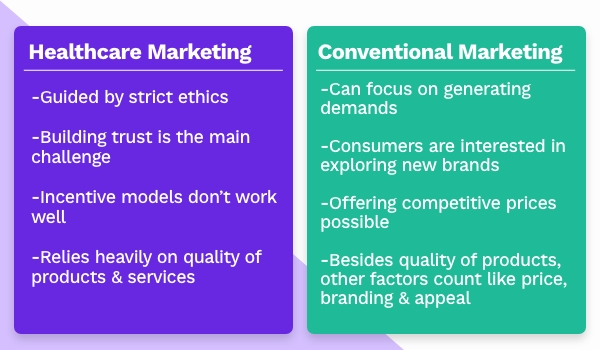
Here is a deeper dive into how healthcare marketing strategies differ from conventional marketing plans:
For commercial products, it is easy to create more demand using various profitable marketing channels such as on-TV promotions, hoardings, or newspaper ads. But for the healthcare industry, such profit-making marketing will turn into a risky game. Because, to generate demand for healthcare facilities or medical products (medicines, injections), you will have to promote maladies. That is ethics 101: no business at the cost of living, right? There goes one traditional strategy out of the list.
Traditional marketing helps boost the profit of popular brands quickly because people have more or less knowledge about the product already. They know what’s being advertised and what its use is. But in the case of marketing strategy in healthcare, it is a continuous uphill struggle to spread information among consumers regarding a product or service. For example, post-partum care or senior person mental health issues are really hard for many to comprehend. So, there will be a general apprehension on these matters from the public.
The focus on the outcomes for traditional marketing and healthcare marketing is entirely different. For traditional marketing, profit or ROI is the key to measuring your marketing success. On the other hand, financial returns, although important, are just one piece of the puzzle for the stakeholders in the medical world. Gaining more loyal consumers and providing fully effective products & services stand at the center of their marketing goals. So, marketing strategies for healthcare need to be determined carefully and tactically.
Here we reveal the most effective healthcare marketing strategies to embrace in 2022.
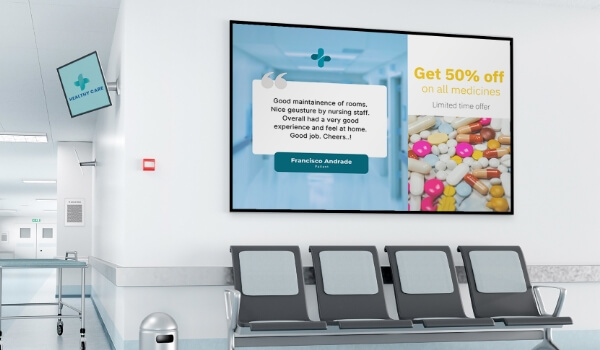
The global market for digital signage will reach $28.33 million by 2026, growing by 6.02% every year from 2020 to 2026. So, investing in digital signage for your healthcare organization will be effective for sure. It will allow you to offer your patients personalized and engaging digital content.
Almost all modern hospitals & clinic facilities have screens. But the content is often outdated and irrelevant to the visitors. That is because these screens generally play pre-designed media like brand images or welcome messages through USB drives.
That is a sheer wastage of a very useful resource for healthcare marketing. When hospitals deploy a well-connected digital signage network, their premises turn world-class.
With digital signage software, healthcare marketers leverage digital displays. They can strategically improve information dissemination and patient experience (the two key strategic pain points of their target consumers.)
On-premise signage screens can show:
Doctors’ list & doctor availability
Way-finding maps and direction signs
Patient queue status through hospital queue management systems
Infotainment content like news feeds, weather feeds, health-related videos from YouTube, live TV channels, and so on.
Digital signage is one of the most versatile tools of marketing for healthcare businesses.
Suggested Read: Benefits of using digital signage in the healthcare industry
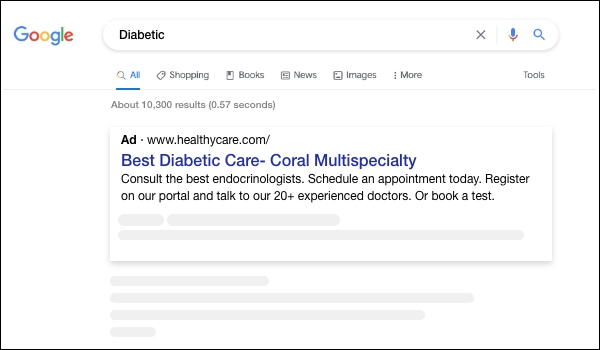
Your site ranks 1st position with a keyword that says ‘best gynaecologist.’ Yet there is more than one ad visible above your website. Those are PPC ads (pay-per-click), commonly known as paid advertisements. With high intent keywords and the right PPC strategy, you can covert genuine leads.Further, with tools like Google Ad Hub , you can also measure the performance of your digital ad campaigns..
Besides hospitals, PPC campaigns are also suitable marketing approaches for healthcare verticals like pharmaceutical companies & medical equipment manufacturers & wholesalers.
Did you know that almost 41% of patients choose doctors based on their social media reputation? Now that you know this, Facebook, Twitter, Instagram & LinkedIn seem more important for your marketing strategy in healthcare practice, right?
Publishing regular content across all the social media channels would help you gain better engagement and generate leads via effective & focused communication. You can leverage the benefits of influencer marketing, online contests, and creative campaigns to draw people’s attention and get your brand identity spread among a global audience.
It is another excellent way to connect with your patients. When you start a hashtag campaign on a trending health issue or news, it automatically draws traffic to your social media page and builds engagement.
Depending on your healthcare business goals and what you want to achieve through your marketing strategies, you must choose your hashtags wisely. Don’t jump in for a random tag that’s trending. You can even display your hashtag campaigns on your hospital’s digital signage displays and engage with visitors.
Today we launch the #loveyourcervix campaign. Women that attend for cervical screening when they are first invited aged 25 are more likely to attend in the future, significantly reducing their risk of developing cervical cancer. #loveyourcervix pic.twitter.com/autBb2gFju
— Public Health Wales (@PublicHealthW) March 12, 2019
If you are running a hospital or a healthcare center, this should be your go-to marketing strategy. Live interaction with the patients means an opportunity for building customer loyalty. How? Comprehensibility and quick doubt-clearance via live chats satisfy people. So, they are automatically drawn towards your services.
You can also launch new facilities, spread awareness, and ask for active participation in a health drive via these live sessions. Interactive Q&A sessions are also popular ways to stay in touch with your patients.
Here is a recorded video of a Facebook live Q&A session organized by Henry Ford Health System:
This isn’t a new marketing strategy for healthcare businesses, but it is more effective these days. People are now thinking outside the insurance box and accepting monthly membership plans from their trusted local healthcare service providers. It’s beneficial for both the business and the consumer. Patients can take better control over their treatments.
An extensive list of medical services is generally offered to the paid members. On top of that, members get discounts and extra support for chronic or long-term ailments. So, it saves the patient some precious dime and brings the healthcare brand a pool of long-term consumers.
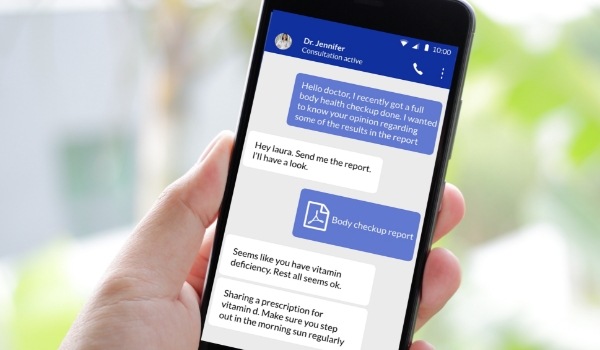
From scrolling through social media to reading a blog, from checking the internet for news to visiting a website – your patients are mostly doing it all on their mobile phones.
So, designing a mobile-friendly website is a must. Also, make sure to develop a brand app for Android, iOS, and other platforms to help patients access your services easily from mobile phones.
Messaging apps like WhatsApp, Messenger, We Chat, and Telegram are great tools for connecting with your prospects. Discount & offer announcements reach your audience easily when done via messaging apps.
The open rate for messages as marketing campaigns is 98%, compared to 20% for email.
Whether it’s appointment slot availability or reminder for a USG test, as long as the information you send via message is helpful for your patients, they’ll be happy to respond. This healthcare marketing strategy also works in customer retention.
Videos are the most credible and easy-to-digest content format that can turn your audience’s decision 360 degrees for good. There is hardly any medical business that doesn’t have a YouTube channel.
You can use videos to show wellness guides, spread awareness on healthcare myths, promote your healthcare practice, and share your patients’ stories.
Marketers who use video content as a marketing tool grow revenue 49% faster than those who don’t employ video marketing.
So, use video content on your YouTube channel, blog posts, website landing pages, and social media channels to get the full advantage out of it.
Here is an example: Health One showcases a 360 degree virtual tour of its Centennial Hospital.
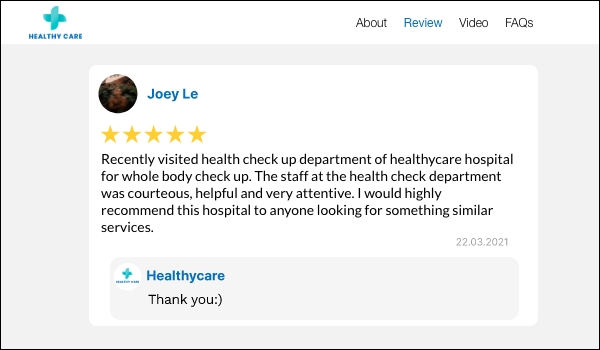
Have you got a good number of patients coming? Now is the time to retain them! Without calculative retention strategies, you can’t achieve that. Here are a few tips on how to retain your consumers.
Go through your online reviews and reply to the negative comments proactively. This makes your customer feel that you’re there for them.
Stay on schedule always and build your patients’ trust.
Constantly supervise your employees for polite and empathetic behavior.
Your front desk should be active, highly professional, up-front, and intelligent in dealing with irate customers.
Provide an interactive digital experience to your patients with the help of digital information libraries and feedback kiosks.
How important is internal marketing? Would you perhaps know that when your employees share your content, it receives eight times more engagement than content shared via other channels?
So, in a rush to build an external marketing strategy, we must not forget about working on internal marketing.
Go through this blog to unlock some potent ways of improving your internal healthcare marketing.

Not every marketing campaign should be a direct hit on the nail, especially not in healthcare. Organizations that put in noble efforts often earn a reputation that brings better results than other well-thought-out marketing strategies.
One such noble effort is organizing public healthcare campaigns. Healthcare campaigns help raise awareness about lesser-known medical issues and eradicate the stigma around some socially-frowned-upon diseases.
Liaisoning with doctors helps your healthcare business boom. Your marketing and sales team must plan regular visits with renowned doctors and promote your brand’s values to them. Persuading the doctors to recommend your organization for health checkups and medical assistance, as part of referral-based marketing, will result in more footfall. A doctor’s referral keeps an organization a notch above others in quality and reputation.
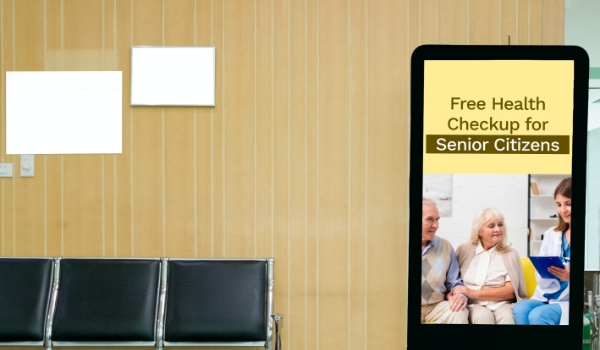
This is one of the most time-tested marketing strategies in healthcare. And there is a reason why it is so popular. Medical care is getting costlier by the day. According to a CNBC report, one in four Americans skips medical care due to high costs.
When you offer a medical checkup package for free or donate medicines, you immediately gain people’s attention. Your beneficiaries spread your brand’s name.
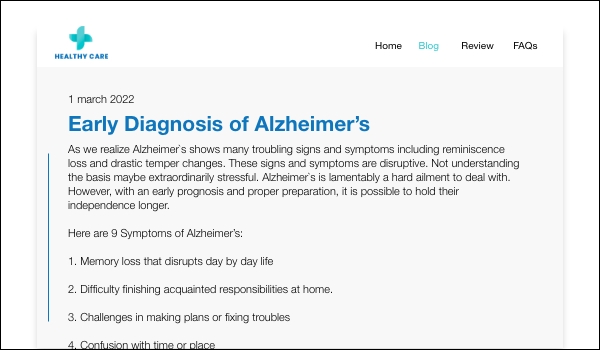
Generally, we indicate written content like blogs, case studies, and the likes by the term long-form content. Long, well-researched content is one of many ways that build strong authority for your website. And when you have a higher domain authority or page authority, you are more likely to rank on Google. Apart from that, it helps in the following ways –
More organic traffic
Boosts P2P sharing with the rapid and wide circulation of the content
Generates more scope for high-value links in the content
Enhances brand image with increased credibility and reputation
Include IoT (Internet of Things) devices in your healthcare practice and stay ahead of your competition. Blood sugar and heart-rate monitoring are two prevalent yet less-explored uses of IoT devices that your healthcare practice might include.
With technological advancements in the healthcare sector, the IoT market will expectedly rise to $158 billion this year, a jump from $41 billion in 2017.
The development of EHRs (electrical health records) is gradually changing how healthcare institutes integrate multiple functions. Ultrasounds, electrocardiograms, thermometers, and more are slowly becoming connected through IoT, helping patients keep track of their medical progress independently.
It’s still in a beginner’s position as far as its use is concerned. Still, with better awareness and advancement, the healthcare sector will soon explore IoT devices with their full potential.
The marketing strategy for your healthcare business must stay in line with all the latest industry trends. Here are some general guidelines to help you design a successful healthcare marketing plan:

Find out what attracts patients to your healthcare business. Identify one crucial factor that draws a good number of patients to your site.
Promote those hard-won quality achievements through well-designed marketing campaigns and build a trustworthy brand identity.
Spreading your marketing goals across numerous channels is good, but sometimes it may be overwhelming if you lose focus.
Therefore, the marketers must analyze and decide the most influential marketing channel for their healthcare practice based on location, patient personas, and service line.
Suggested Read: Marketing channels that drive excellent results for businesses
Healthcare businesses rely incredibly on brand reputation. Hence, marketing strategies for healthcare companies must include reputation management at its core.
Highlight positive feedback across all social media channels. Reply to the negative reviews with a customer-first approach.
Personalized marketing approaches generate better results.
Marketers can leverage the clinical data from the patient records and then consciously target consumers based on their needs and preferences.
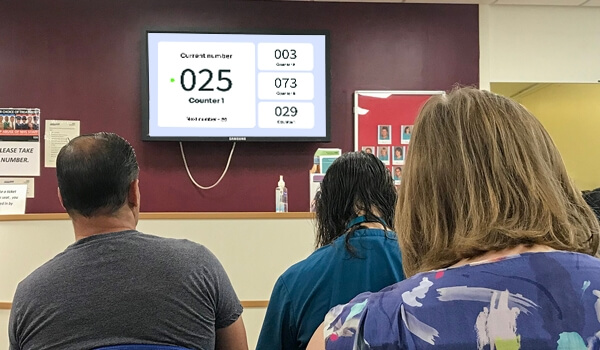
The overall customer experience should be picture-perfect no matter what. Hence, keep your website, social media pages, mobile apps, and digital display boards free of bugs.
Work on providing your audience with a glitch-free on-premise digital experience too. This includes deploying self-service booths, mobile accessibility of physical content, and implementing systems that improve the operational efficiency of your staff (such as queue management systems and visitor management systems)
All these details sum up to one valuable understanding: today’s marketing strategy for healthcare centers around the patients and their priorities. Achieve your goals with a sound healthcare marketing scheme by applying the techniques mentioned earlier as per your need and niche.
Take complete control of what you show on your digital signage & how you show it.
Start Free Trial Schedule My Demo
Apr 18 2022
9 min read

Dec 8 2021
8 min read
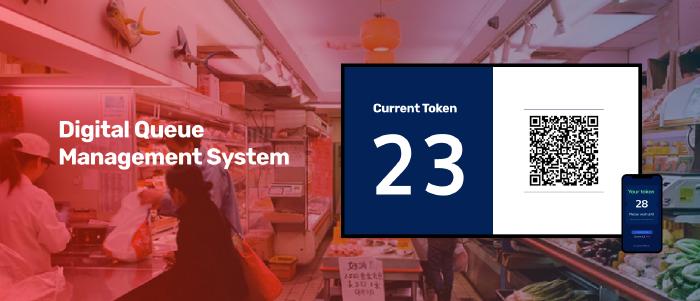
Oct 22 2020
7 min read
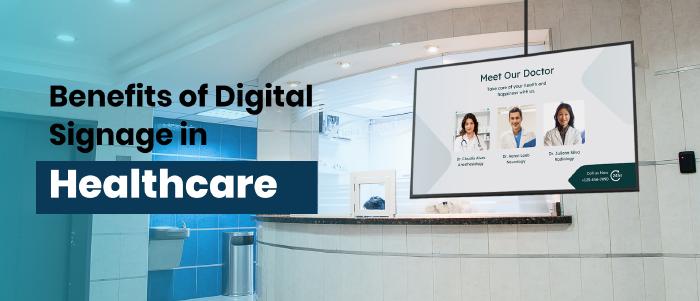
Jan 1 2020
8 min read